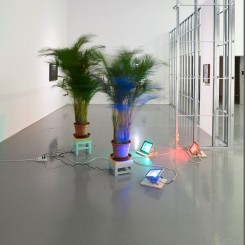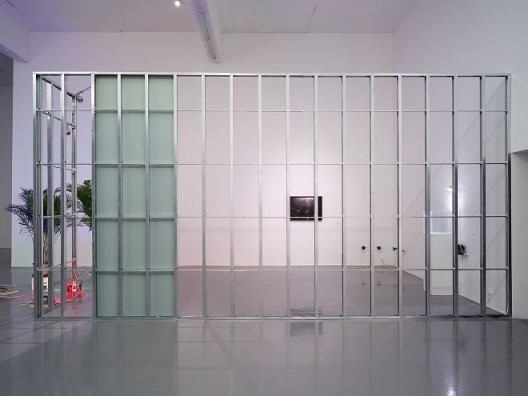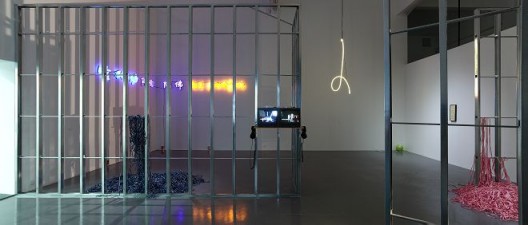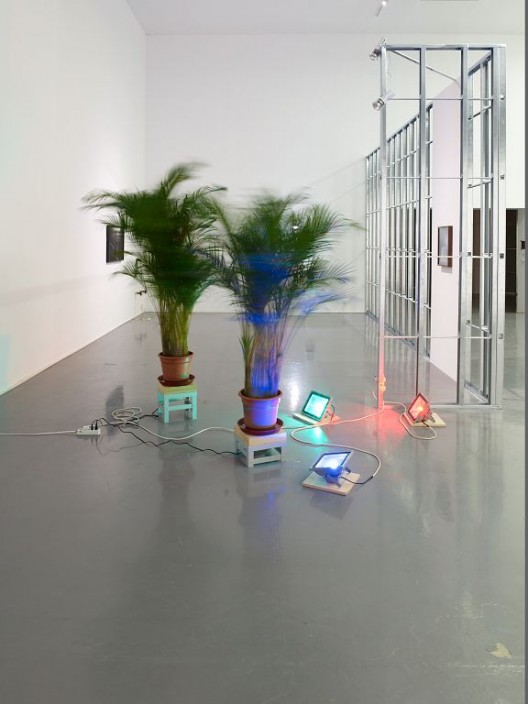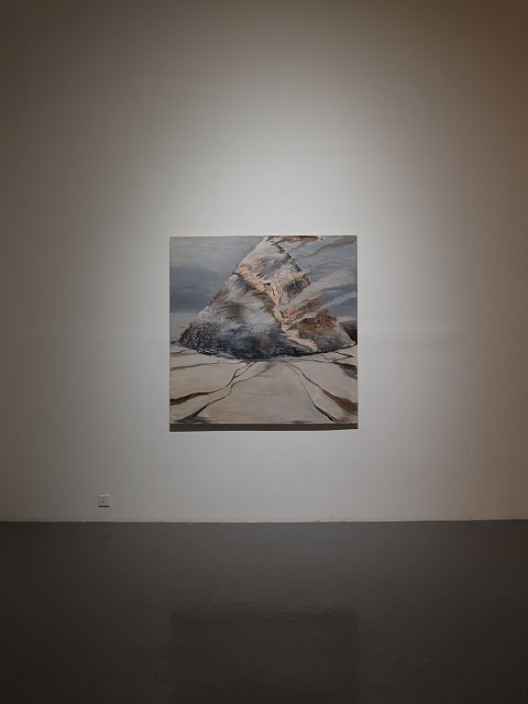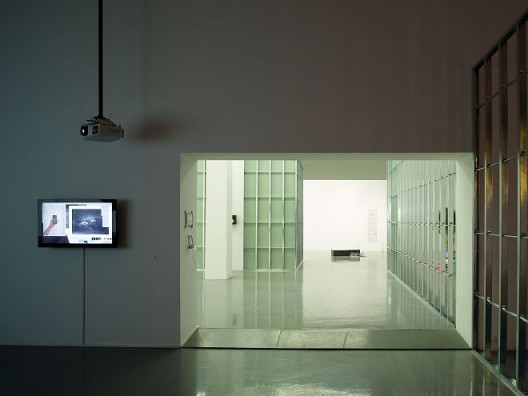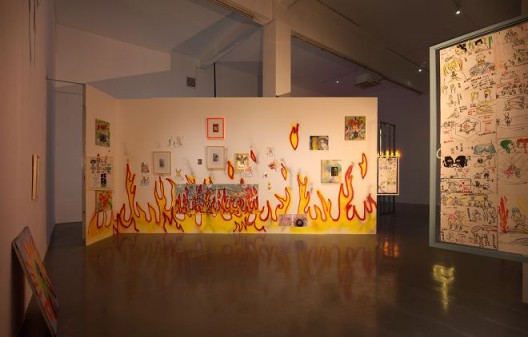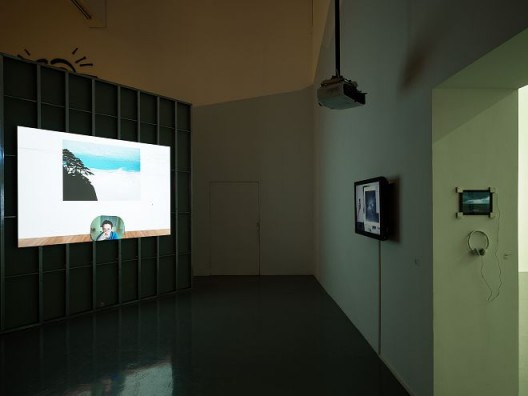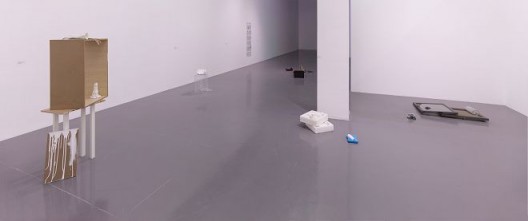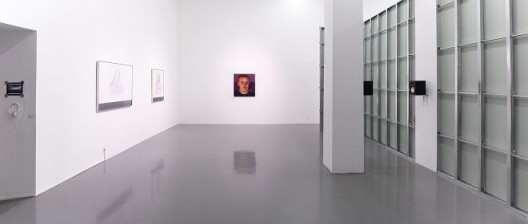“Peepshow”: group exhibition with Tianzhuo Chen, He Yida, Hu Qingtai, Lin Ke, Tang Dixin, and Trevor Yeung
Long March Space (798 Art District, Chaoyang, Beijing), Dec 12, 2015–Jan 31, 2016
With the turn of 2015, Long March Space, known for its serious mien, seemed intent on disrupting low spirits in the middle of winter. Its most recent exhibition consisted of artworks by young artists, each occupying a relatively complete and delineated exhibition space. The six participating artists (Chen Tianzhuo, Hu Qingtai, He Yida, Lin Ke, Trevor Yeung, Tang Dixin) are called “young artists”—though in actual fact the pace of today’s art world long ago made artists jettison their youthfulness, while the spoils they have earned really constitute the “capital” for this exhibition. “Peepshow” appears direct without entailing a thematic, intellectual direction; instead it displays a rather soft attitude—a vibe of “going with the flow” and of making external observations of quotidian conditions.
“Peepshow” presents an extension of a perspective, emphasizing ways of casting spells on what is “daily” within new segmentations of time in order to permit serious consideration of it. In contrast with the usual approach of mature, established art galleries, the curator (Theresa Liang) at Long March Space has used concrete structures to divide the space into compartments which can be peeped into. Such an approach is often seen in experimental spaces and has indeed allowed for dialogue between the artworks. Perhaps earlier on, young artists’ practices collectively tended to embody concepts as experience through the progression of the quotidian. For instance, Wang Guangle’s Water Rubbing Stone series and Song Kun’s solo exhibition “It’s My Life” unanimously convey a marked resistance through a tremendous number of living, daily fragments as props. At the same time, in an era overtaken by homogenous grammar, the spaces for artistic experimentation do not only involve art galleries, art museums, experimental spaces and art studios; it matters little being produced by the tools of shops, advertising, and social media in order to acquire new spaces of resistance.
This suggests that one may enter into the exhibited “quotidian” at any minute, as production and viewing take place simultaneously. Tang Dixin’s video work “Force Majeure” is like this. When the camera becomes the eyes of the cameraman, when the rough filming technique dissolves and distances itself from professionalism, the viewer is beckoned in quite naturally. Although “jumping onto the tracks” (subway tracks, that is) is not exactly your average daily experience, the residual imagery here may nevertheless offer you a sense of familiarity. In fact, Tang isn’t keen on others bringing up this work and thereby inviting possible misinterpretations of social issues. Clearly, Tang Dixin’s focus was to offer up a hallucinatory challenge towards the simple objects of everyday life. This is a practice that Tang has taken to an extreme in the work “Live Burial”, in which he presents face to face a tacit understanding with a Japanese male who may very well be buried alive. Contrary to Chen Tianzhuo, with his willful theatrical stage tension, Tang interprets performance onto a flat surface; on an open wall, he places his works on paper with graffiti over it in order to enact an additional layer. The intentional brushwork and above-eye-level perspective are as wanton as “floating subtitles”.
The concern with everyday conditions may present many points of attack. One may choose to transpose the everyday object—for instance, choosing plants and water in their natural state in order to pierce loathsome elements of social ideology. Trevor Yeung adopts photosynthesis and manipulates the light (spinning) to make it look like two clown-like palm trees, circulating in the glass vat in which the “stagnant water” seems to overflow. One can also become infatuated with inadvertent everyday friction in order to engender possibilities of language substitution. For example, in Hu Qingtai’s video “Stubborn/Serious/Obstinate/Eccentric”, the figures perform “charades” according to the given terms. Of course, there are also diaristic sculptures where the “studio practice” artist He Yida displays his love for incredibly inexpensive materials, while indulging in manic interpretations—to which is added humorous writing, allowing (non-human) programs and software to become the tool for writing diaries.
